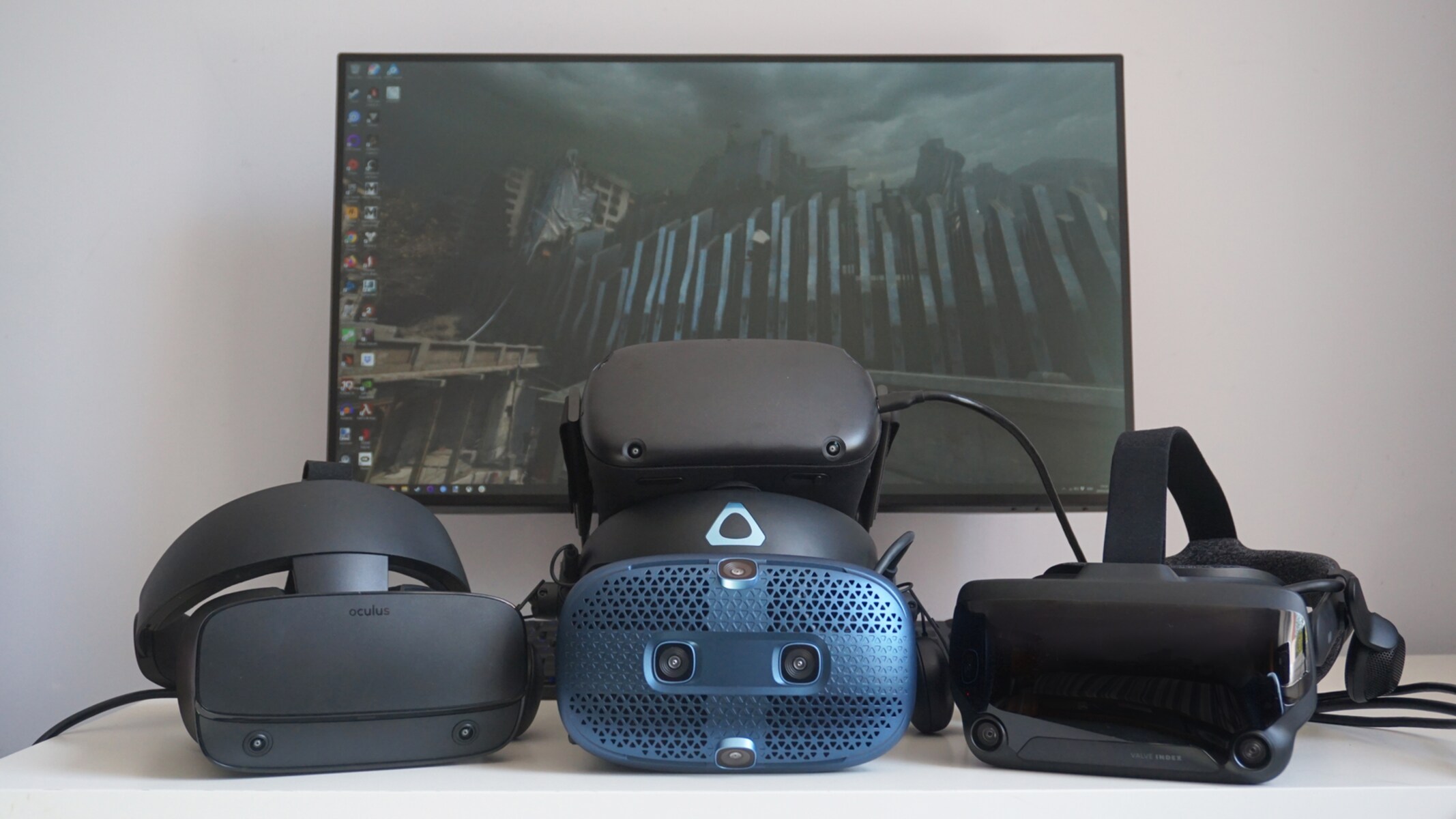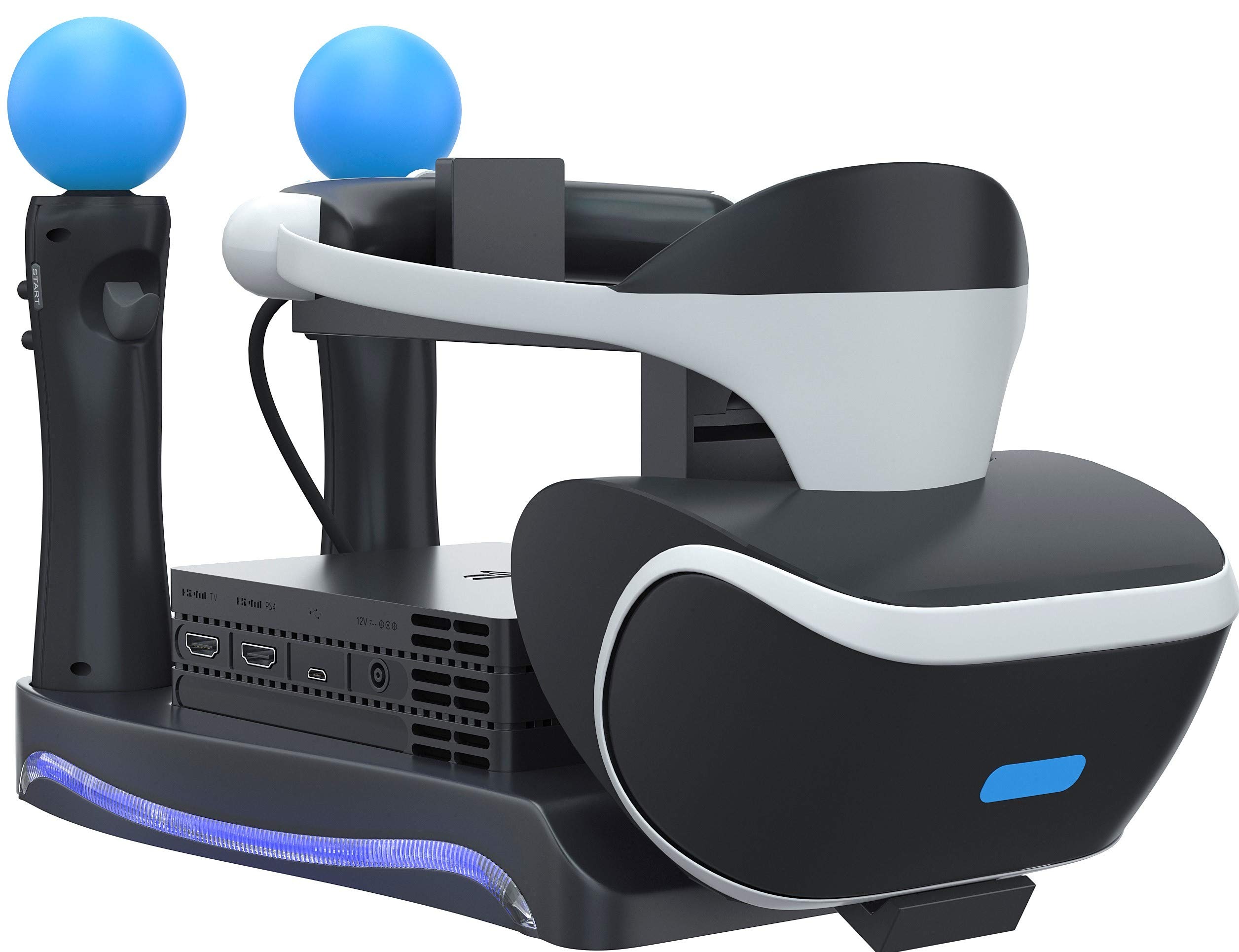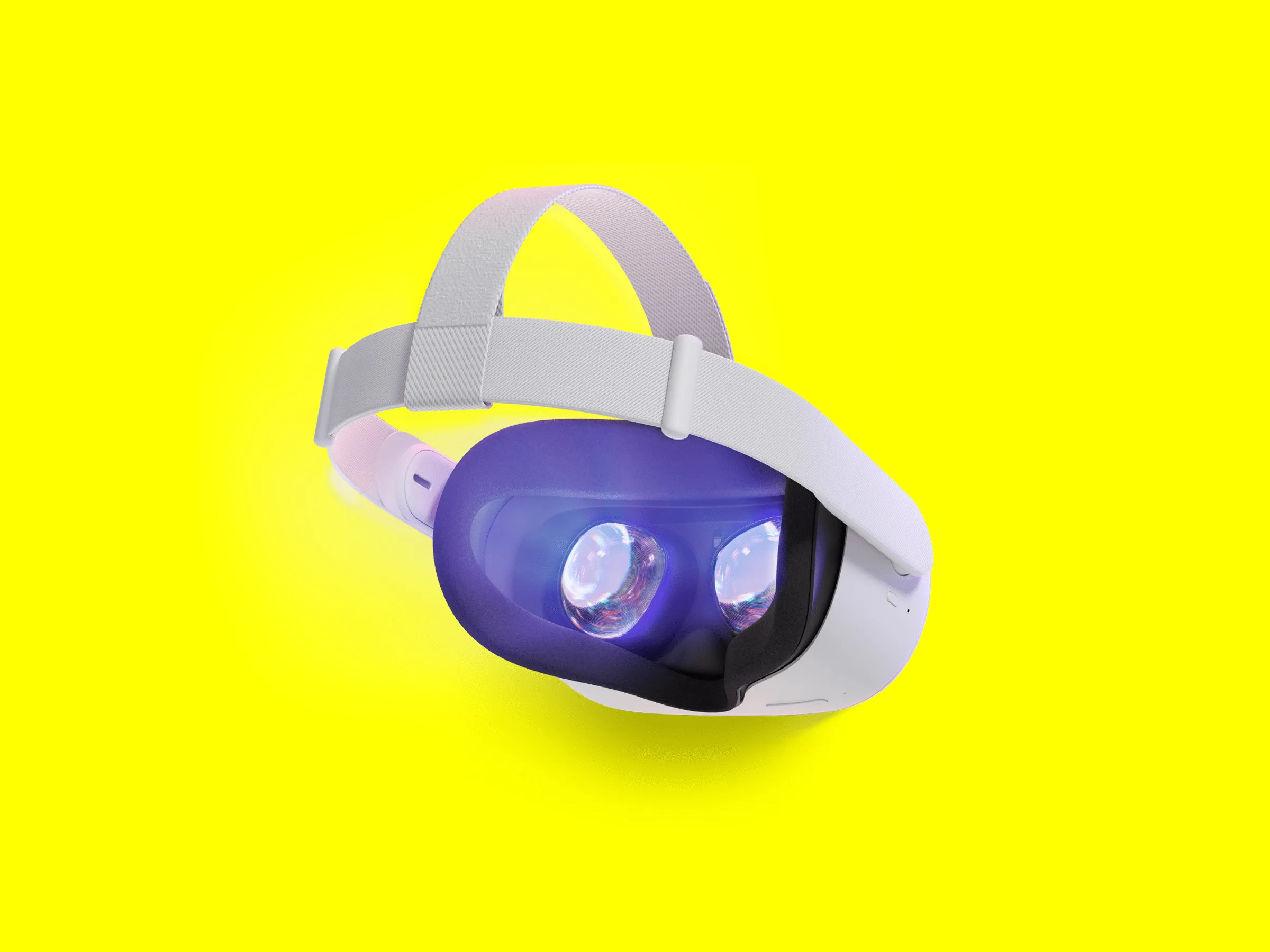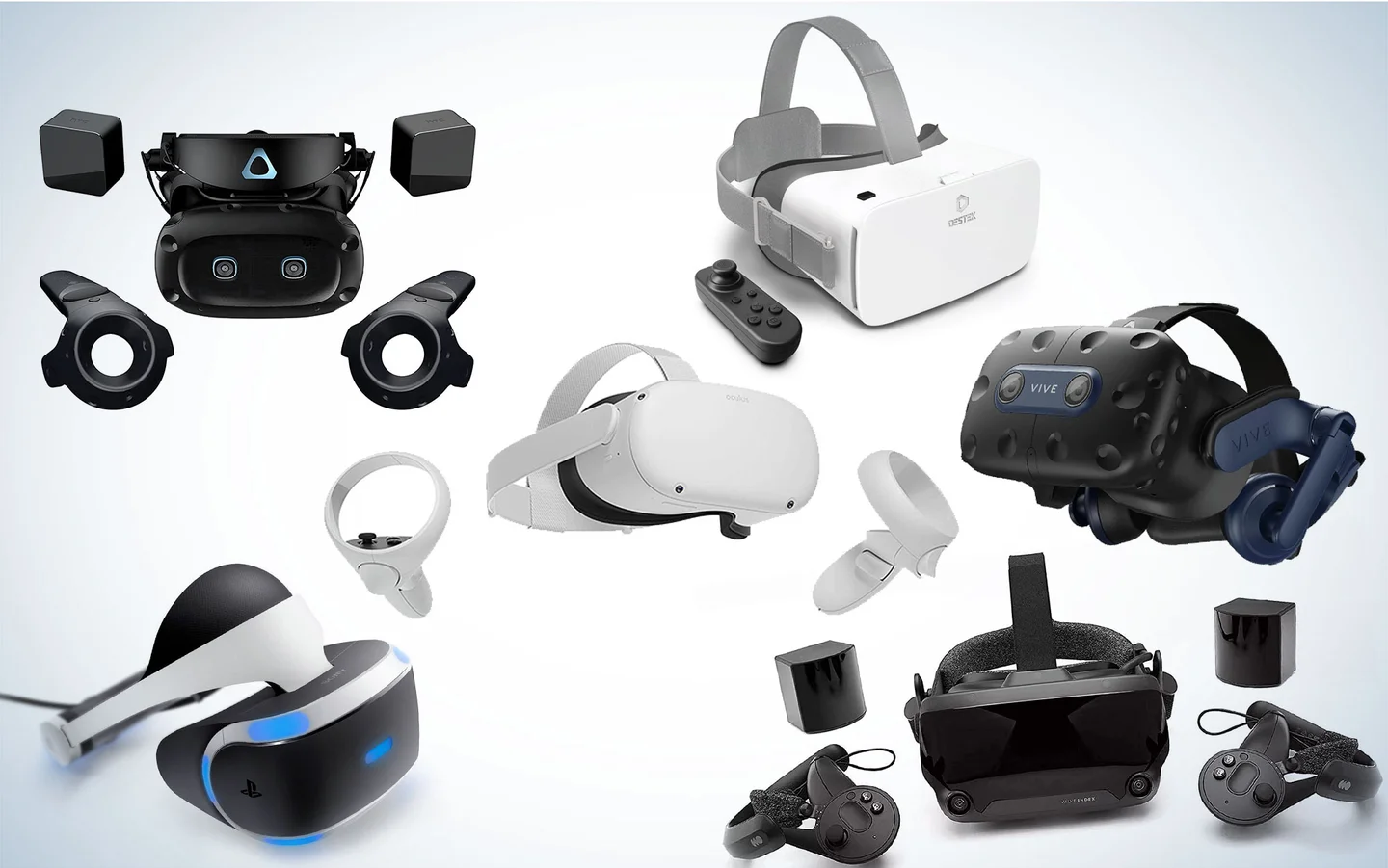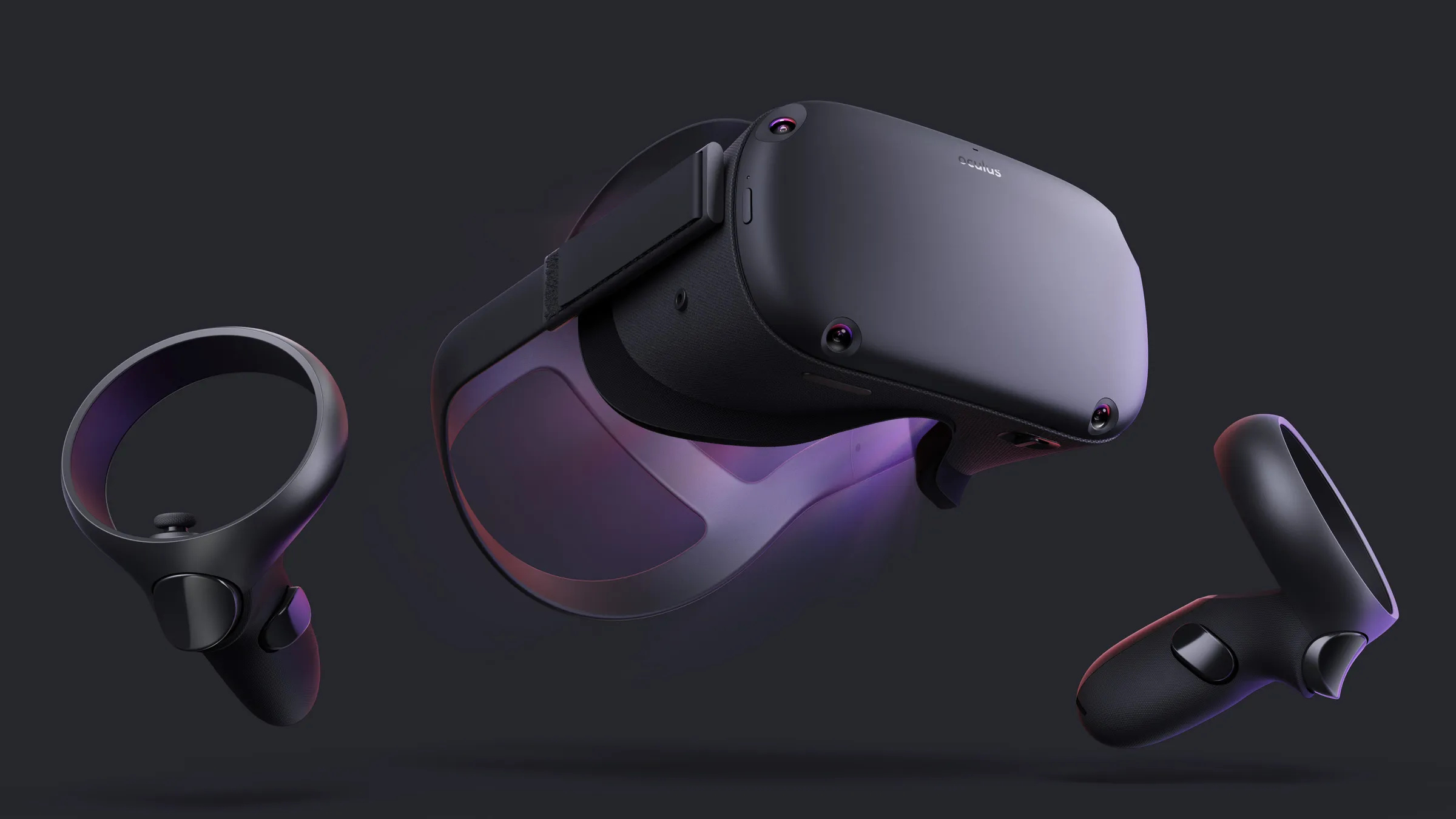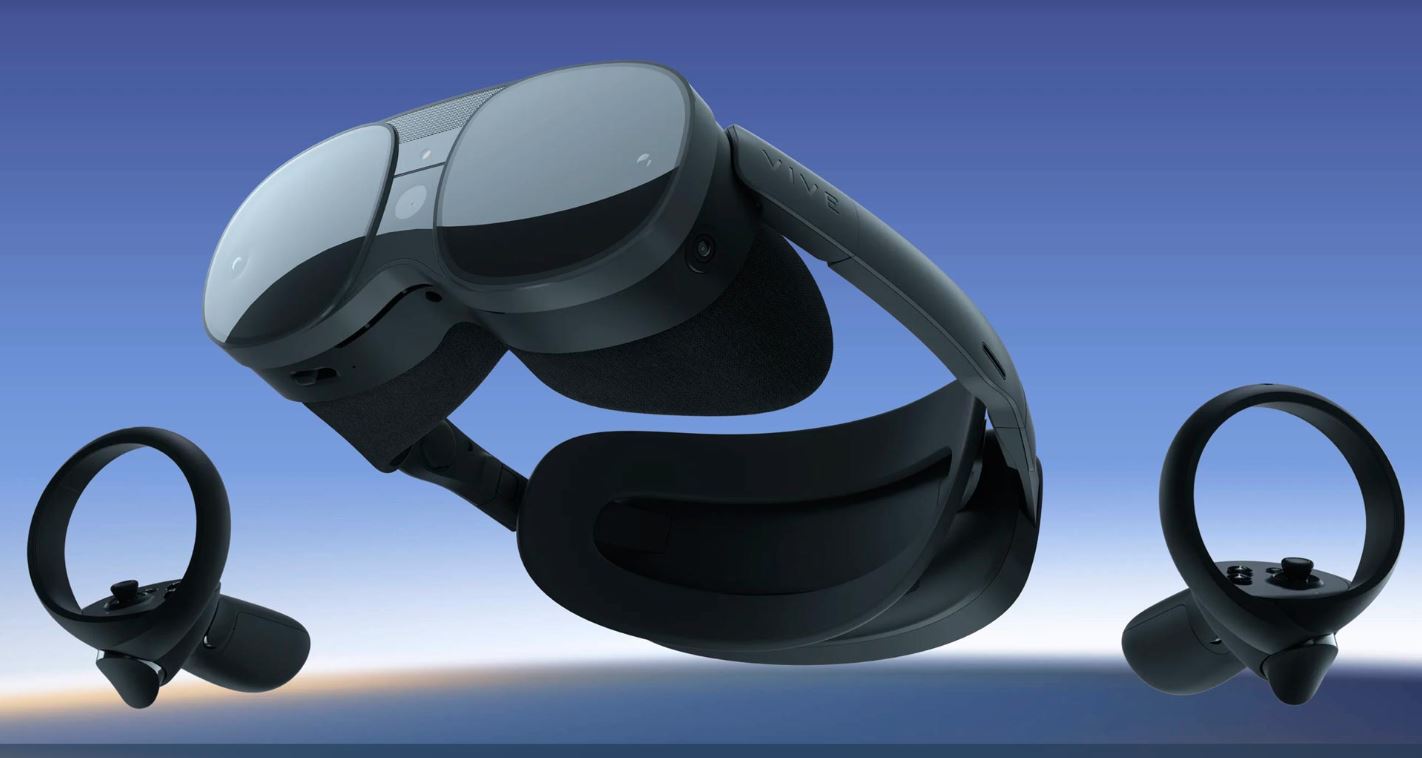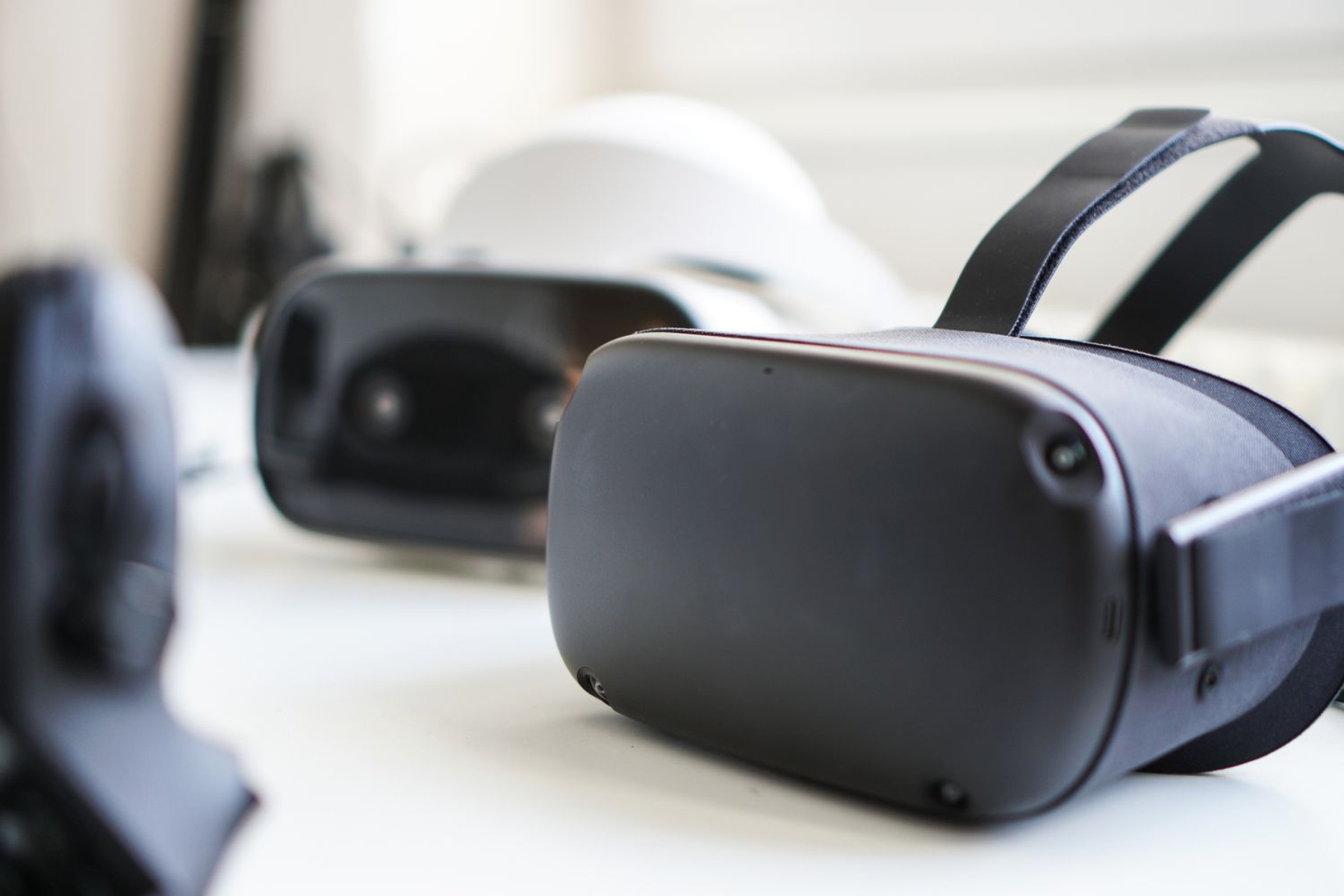Introduction
Welcome to the world of virtual reality (VR)! As technology continues to advance, the concept of immersing oneself in a virtual world has become increasingly popular. With a VR headset for PC, you can step into a whole new dimension of gaming, entertainment, and exploration.
A VR headset for PC is a device that utilizes cutting-edge technology to transport you into realistic and interactive virtual environments. It consists of a head-mounted display (HMD) that covers your eyes, and often includes built-in sensors, cameras, and controllers for a truly immersive experience.
But how much does a VR headset for PC cost? The price can vary depending on several factors, such as the type of headset, the level of performance, and additional features. In this article, we will explore the factors that determine the price of a VR headset for PC, compare different types of headsets, and discuss the costs involved in owning one.
Whether you are a hardcore gamer, a tech enthusiast, or simply curious about the world of VR, understanding the costs associated with a VR headset for PC is crucial. By the end of this article, you will have a better understanding of the price range for VR headsets for PC and be able to make an informed decision about whether or not it is worth the investment.
Factors that Determine the Price of a VR Headset for PC
When it comes to the cost of a VR headset for PC, there are several factors that can influence the price. Understanding these factors will not only help you make a more informed decision but also ensure that you get the best value for your investment. Here are some key factors to consider:
1. Display Technology: The type of display used in a VR headset greatly affects its price. Headsets with higher-resolution displays, such as OLED or AMOLED, tend to be more expensive than those with lower-resolution LCD displays. The quality of the display also impacts the overall visual experience, with higher-end headsets offering sharper images and vibrant colors.
2. Field of View (FOV): The FOV refers to the extent of the virtual world that can be seen through the headset. Headsets with wider FOVs provide a more immersive experience but tend to command a higher price tag. A wider FOV allows for better peripheral vision and a more natural viewing experience, mimicking the actual human field of view.
3. Tracking System: The tracking system of a VR headset is responsible for detecting your movements and translating them into virtual actions. Some headsets use external sensors or cameras to track your position, while others have built-in sensors. Headsets with more sophisticated tracking systems, such as room-scale or inside-out tracking, generally come at a higher cost.
4. Refresh Rate: The refresh rate of a VR headset determines how frequently the display updates with new images. A higher refresh rate, typically measured in Hertz (Hz), ensures smoother motion and reduces motion sickness. Headsets with higher refresh rates tend to be pricier, as they require more advanced display technology and hardware.
5. Audio Quality: Sound plays a crucial role in enhancing the immersion of a VR experience. Higher-end headsets often come with integrated audio systems or provide headphone jacks to connect external audio devices. The quality of audio reproduction, including spatial sound and noise cancellation, can contribute to a more immersive and realistic experience.
6. Brand and Reputation: The brand of the VR headset can also impact the price. Well-established brands with a proven track record of delivering high-quality VR experiences often command higher prices due to their reputation and customer trust. However, newer brands or lesser-known manufacturers may offer more affordable options without compromising on quality.
By considering these factors, you can better evaluate the pricing options available for VR headsets for PC. It is important to find the right balance between your budget and desired features to ensure a satisfying VR experience. Now that we have explored the factors that determine the price of a VR headset for PC, let’s dive deeper into the different types of headsets available.
Types of VR Headsets for PC
When it comes to VR headsets for PC, there are different types available to suit varying needs and budgets. Each type offers its own unique features and performance capabilities. Understanding the differences between these types will help you determine which one is best suited to your requirements. Let’s explore the three main types:
1. Tethered VR Headsets: Tethered VR headsets are connected to your PC through cables, providing a high-fidelity experience with powerful performance. These headsets offer the most immersive experience and often come with advanced tracking systems and high-resolution displays. They require a dedicated gaming PC or a powerful workstation to run smoothly. Examples of tethered VR headsets include the Oculus Rift S, HTC Vive, and Valve Index.
2. Standalone VR Headsets: Standalone VR headsets have built-in processors and do not require a PC or console to operate. They provide a more portable and wireless VR experience, making them ideal for those who want to enjoy VR on the go. Standalone headsets typically have lower hardware requirements and performance compared to tethered headsets, but they offer convenience and ease of use. Examples include the Oculus Quest and Lenovo Mirage Solo.
3. Hybrid VR Headsets: Hybrid VR headsets offer a combination of tethered and standalone capabilities. They can be used as standalone headsets when untethered and connected to a PC for a more powerful VR experience. This versatility allows users to enjoy the convenience of a standalone device while having the option to access more demanding VR content when connected to a PC. An example of a hybrid VR headset is the HP Reverb G2.
Choosing the right type of VR headset depends on your specific needs, preferences, and available budget. Tethered headsets offer the highest level of immersion and performance, but they require a powerful PC and are less portable. Standalone headsets provide convenience and ease of use, but they may have limitations in terms of graphics and processing power. Hybrid headsets offer a middle ground, providing the flexibility to switch between standalone and tethered modes.
Now that you have a better understanding of the different types of VR headsets available for PC, let’s explore the cost range for entry-level, mid-range, and high-end options in the next sections.
Cost of Entry-Level VR Headsets for PC
If you’re new to the world of VR or have a limited budget, entry-level VR headsets for PC offer a more affordable option without compromising on the basic VR experience. These headsets provide a gateway to immerse yourself in virtual worlds and enjoy VR gaming, multimedia, and other applications. Let’s take a look at the cost range and features of entry-level VR headsets:
Entry-level VR headsets for PC typically range in price from $200 to $500. These headsets offer a decent level of immersion and performance for casual VR enthusiasts. Although they may have some limitations compared to higher-end options, they are a great starting point to enter the VR world without breaking the bank.
At the lower end of the price range, you’ll find headsets like the Oculus Rift S and the Windows Mixed Reality headsets. These headsets offer a comfortable fit, high-resolution displays, and basic tracking capabilities. They provide an enjoyable VR experience with a moderate level of immersion and are suitable for a wide range of VR applications.
As you move higher within the entry-level range, you’ll find headsets like the HTC Vive Cosmos and the Valve Index. These headsets offer improved tracking accuracy, higher refresh rates, and better overall performance. They often come with additional features such as integrated audio systems and adjustable lenses, enhancing the overall VR experience.
While entry-level VR headsets for PC may lack some advanced features found in higher-end headsets, they are still capable of delivering an immersive and enjoyable VR experience. They are a great option for beginners or those on a tight budget, allowing them to dip their toes into the virtual reality world.
It’s worth noting that the cost of entry-level VR headsets for PC does not include other necessary components, such as a compatible gaming PC or software. These additional costs should also be considered when budgeting for a VR setup.
Now that we’ve explored the pricing of entry-level VR headsets, let’s move on to the mid-range options and see what they have to offer.
Mid-Range VR Headsets for PC: Price and Features
If you’re looking for a balance between price and performance, mid-range VR headsets for PC offer a great option. These headsets provide a step up from the entry-level options, offering enhanced features and capabilities without reaching the premium price range. Let’s explore the price range and features of mid-range VR headsets:
Mid-range VR headsets for PC typically range in price from $500 to $800. Within this range, you’ll find headsets that offer improved display quality, advanced tracking systems, and enhanced comfort.
Headsets like the Oculus Quest 2 fall within the mid-range category. While primarily designed as a standalone headset, it can also be connected to a PC for a more powerful VR experience. The Oculus Quest 2 boasts a high-resolution display, a wide field of view, and excellent tracking capabilities. Its versatility and affordability make it a popular choice among VR enthusiasts.
The Valve Index is another notable mid-range VR headset known for its high-quality display, excellent tracking, and comfortable fit. It offers a wide field of view, high refresh rates, and precise controllers. The Valve Index provides a premium VR experience at a more affordable price compared to high-end options.
Mid-range VR headsets often provide advanced features such as room-scale tracking, improved ergonomics, customizable fit, and integrated audio systems. These features contribute to a more immersive and comfortable VR experience, allowing users to fully engage with virtual environments.
Mid-range VR headsets strike a balance between affordability and performance, making them suitable for avid gamers, VR enthusiasts, and content creators. They offer an excellent middle ground, providing superior features at a more accessible price point compared to high-end options.
Remember that the cost of a mid-range VR headset for PC does not include other necessary components, such as a compatible gaming PC or software. These additional costs should be considered when budgeting for a complete VR setup.
Now that we’ve explored the mid-range options, let’s move on to the high-end VR headsets for PC and examine their price and performance characteristics.
High-End VR Headsets for PC: Price and Performance
If you’re a serious gamer or VR enthusiast who craves the ultimate VR experience, high-end VR headsets for PC deliver top-of-the-line performance and cutting-edge features. These headsets offer the most immersive and realistic virtual reality experiences available on the market. Let’s explore the price range and performance characteristics of high-end VR headsets:
High-end VR headsets for PC typically range in price from $800 to $1,500 and beyond. At this price range, you can expect the latest advancements in display technology, superior tracking systems, and premium features that push the boundaries of VR immersion.
Headsets like the HTC Vive Pro and the HP Reverb G2 fall into the high-end category. These headsets offer stunning visuals with high-resolution displays, providing exceptional clarity and detail. They often come with advanced tracking systems, such as SteamVR Base Stations or advanced inside-out tracking, ensuring precise and accurate movement in virtual environments.
The Valve Index is another high-end VR headset renowned for its exceptional performance. It offers a wide field of view, high refresh rates, and precise controllers. The Valve Index provides a premium VR experience with smooth gameplay and immersive interaction capabilities.
High-end VR headsets often come with additional features like adjustable lenses, integrated audio systems, and ergonomic design for maximum comfort during long gaming sessions. These headsets are designed to provide the most realistic and immersive VR experiences available, catering to the needs of hardcore gamers, professional content creators, and VR enthusiasts.
It’s important to note that high-end VR headsets for PC may require a powerful gaming PC or workstation to fully harness their capabilities. This additional investment should be taken into account when considering the overall cost of a high-end VR setup.
If you’re looking for the best performance, cutting-edge features, and a truly immersive VR experience, high-end VR headsets for PC are worth the investment.
Now that we’ve explored the high-end options, let’s move on to the additional costs you should consider when purchasing a VR headset for PC.
Additional Costs to Consider when Purchasing a VR Headset for PC
When purchasing a VR headset for PC, it’s important to take into account the additional costs that may be involved. While the cost of the headset itself is a significant expense, there are other components and accessories you may need to fully enjoy your VR experience. Let’s explore some of the additional costs to consider:
1. Gaming PC or Workstation: VR headsets for PC require a compatible gaming PC or workstation to run smoothly. If you don’t already have a powerful PC that meets the recommended specifications, you may need to invest in one. The cost of a gaming PC can range from a few hundred dollars for entry-level options to several thousand dollars for high-end configurations.
2. VR Games and Software: To fully enjoy your VR headset, you’ll need a collection of VR games and software. While there are free options available, premium VR games often come with a price tag. The cost of VR games can vary depending on the title and platform, ranging from a few dollars for indie games to over $50 for AAA titles.
3. Accessories: Depending on the VR headset you choose, there may be additional accessories that are beneficial or necessary for an optimal VR experience. These accessories can include extra controllers, VR sensor stands, additional cables, or even VR-specific input devices. The cost of these accessories can add up, so it’s important to factor them into your budget.
4. VR Content Subscriptions or Services: Some VR platforms or content providers offer subscription-based services or premium content that may require additional fees. These services can include access to a library of VR games, streaming services, or exclusive experiences. Consider whether you’re interested in these services and factor them into your budget accordingly.
5. Upgrades and Maintenance: Over time, technology advances, and you may want to upgrade your VR headset or PC components to stay up to date with the latest advancements. Additionally, regular maintenance and upkeep, such as cleaning the lenses or replacing worn-out cables, may incur some costs. Make sure to account for these potential expenses over the lifespan of your VR setup.
By considering these additional costs, you can plan your budget more effectively and ensure that you have everything you need for a seamless and enjoyable VR experience. It’s essential to have a clear understanding of the total cost of ownership before making a purchase decision.
Now that we’ve explored the additional costs involved, let’s discuss whether investing in a VR headset for PC is worth it.
Is It Worth Investing in a VR Headset for PC?
With the cost of VR headsets for PC and the additional expenses to consider, you may be wondering if investing in a VR headset is worth it. The answer ultimately depends on your personal interests, preferences, and budget. Here are some factors to consider when deciding if a VR headset for PC is a worthwhile investment:
1. Immersive and Interactive Experience: VR headsets offer a level of immersion and interactivity that traditional gaming and multimedia experiences cannot match. Stepping into virtual worlds, exploring new environments, and interacting with objects in a 3D space can be a truly transformative and captivating experience. If you value immersive and interactive entertainment, a VR headset can provide a new level of enjoyment.
2. Variety of Applications: VR is not just limited to gaming. VR headsets for PC can be used for a wide range of applications, including educational experiences, virtual travel, training simulations, and more. Whether you’re interested in exploring historical landmarks, honing your skills in a virtual environment, or simply trying out new experiences, a VR headset opens up endless possibilities.
3. Evolving Technology: VR technology is continuously evolving and improving. Newer headsets often come with enhanced features, better performance, and a wider selection of content. By investing in a VR headset now, you can stay ahead of the curve and enjoy the latest advancements in virtual reality as they become available.
4. Social and Multiplayer Experiences: VR headsets enable multiplayer and social interactions in virtual environments, allowing you to connect and engage with friends, family, and other VR users from around the world. Whether it’s playing multiplayer games, attending virtual events, or collaborating on projects, VR can offer a unique social experience that brings people together regardless of physical distance.
5. Long-Term Entertainment Value: While the initial investment may be significant, a VR headset can provide long-term entertainment value. With a vast library of VR games and experiences, you’ll have plenty of content to enjoy for months or even years. Additionally, as VR technology becomes more widespread, the availability of high-quality VR content will only grow, ensuring a continuous stream of new and exciting experiences.
Ultimately, the decision to invest in a VR headset for PC depends on your specific interests, budget, and willingness to embrace this evolving technology. It’s important to research and consider the available options, read reviews, and even try out VR experiences before making a decision. With the right mindset, a VR headset for PC can offer a truly immersive and unforgettable journey into the virtual world.
Now that we’ve explored the question of whether investing in a VR headset for PC is worth it, let’s wrap up our discussion.
Conclusion
Virtual reality (VR) headsets for PC provide an immersive and interactive experience that can transport you to incredible virtual worlds. While the cost of a VR headset and the additional expenses to consider may seem daunting, the investment can be well worth it for those seeking a unique and captivating entertainment experience.
We explored the factors that determine the price of a VR headset for PC, including display technology, field of view, tracking system, refresh rate, audio quality, and brand reputation. Understanding these factors allows you to make an informed decision based on your preferences and budget.
Further, we discussed the different types of VR headsets for PC, ranging from tethered options that provide the highest level of immersion and performance, to standalone and hybrid headsets that offer portability and convenience. Each type has its own advantages and caters to different needs.
Examining the cost ranges and features of entry-level, mid-range, and high-end VR headsets, we found that there are options available to suit various budgets and requirements. Entry-level headsets offer an affordable entry point, mid-range headsets strike a balance between price and performance, while high-end headsets deliver top-of-the-line features and the most realistic VR experiences.
We also discussed the additional costs to consider, including a compatible gaming PC or workstation, VR games and software, accessories, and potential maintenance and upgrade expenses. It’s important to factor in these costs when budgeting for a complete VR setup.
Ultimately, the decision to invest in a VR headset for PC depends on your personal interests, preferences, and budget. VR headsets provide an immersive and interactive experience, a variety of applications beyond gaming, and access to evolving technology. They also offer social and multiplayer experiences and long-term entertainment value.
By considering these factors and weighing the benefits against the costs, you can determine if a VR headset for PC is a worthwhile investment for you. Whether you’re a dedicated gamer, tech enthusiast, or simply curious about the world of VR, a well-chosen VR headset can take you on an extraordinary virtual journey.







